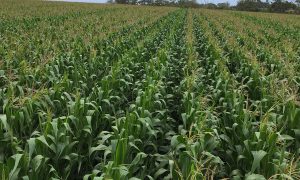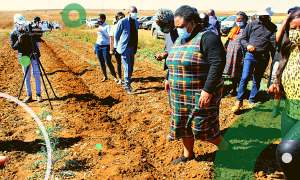A new report finds that 64% of food consumed in Africa is handled by millions of small and medium-sized enterprises (SMEs), creating vast opportunities for family and women farmers.
A report published on 3 September, found that millions of small and medium-sized enterprises (SMEs) source food directly from millions of smallholder farmers across Sub-Saharan Africa. These SMEs, often women-led, include food processors, wholesalers, and retailers.
SMEs provide a range of services, from transport and logistics to the sale of inputs such as fertilizer and seed to farmers. Their activity is driving a “Quiet Revolution” across African agriculture, connecting smallholder farmers to commercial markets at an unprecedented rate.
Also, the report found that, overall, only about 20 percent of the volume of food consumed in Africa fits the conventional notion of subsistence agriculture—food consumed directly by the farming households that grow it. The majority of what Africans eat flows through what is known as the private sector “value chains” managed by SME businesses that purchase commodities directly from smallholder farmers and then process, package, transport and sell food products to the urban and rural consumers.
SMEs also play a large, growing and vital role in markets for inputs like fertilizer and seed, as well as farm machines and pesticides.
“All this represents a profound turnaround from mere decades ago, ” said Dr. Thomas Reardon of Michigan State University, a lead author of the report. “There has been a ‘Quiet Revolution’ in agrifood private sector value chains linking small farmers to burgeoning urban markets and growing towns in Africa. This has spurred farmers’ participation in food and farm input markets.”
The 2019 Africa Agricultural Status Report (AASR) from the Alliance for a Green Revolution in Africa (AGRA) highlights how the private sector-led “hidden middle” of the agri-food supply chains has undergone a Quiet Revolution. Its rise has been primarily unrecognized by policymakers (hence “hidden middle”), even as it has bridged gaps that previously separated most small-scale farmers from commercial markets.
“SMEs are the biggest investors in building markets for farmers in Africa today, and will likely remain so for the next 10-to-20 years,” said Dr. Agnes Kalibata, President of AGRA. “They are not a ‘missing middle,’ as is thought, but the ‘hidden middle,’ ready for support and investment to thrive further. Today, we bring them out into the light.”
In terms of the actual value, AASR finds that traders, truckers, and processors constitute about 40 percent of the total gross value of the agri-food system in the region – this is the same as the share coming from farms. Retailers constitute the remaining 20 percent.
Changing conditions have set the stage for the growth of these SMEs. Among these changes are increasing farm productivity that makes more raw material available; initial government investments in infrastructure such as roads; rapid and massive urbanization; diet change with rising demand for processed food; and rising investments by the entrepreneurs themselves.
Examples of SME impact
SMEs often spontaneously cluster around cities and towns. Especially when supported by government investments in infrastructure they have a profound impact, as the following examples reveal.
a) Maize-feed-chicken system in Nigeria
The maize-feed-chicken system has developed rapidly in Nigeria, where consumer demand for chicken is strong. In 10 years, the volume of chicken feed increased by 600 percent from 300 thousand to 1.8 million tons. Boosted by government investments in roads and wholesale markets, some 10s of 1000s of maize traders, truckers, feed, and flour mills and warehouse operators get the maize produced by roughly eight million farmers to end consumers. Some 85 percent of this work is carried out by SMEs, many women-led.
b) Flour milling and processed food variety in Tanzania
An inventory of processed foods on sale in Dar es Salaam found 487 different items of processed maize and other flours, packaged rice, dairy products, juices, and poultry. Eighty percent came from Tanzania and other African countries; 20 percent from outside Africa. Of hundreds of maize flour milling SMEs surveyed in Tanzania, 85 percent started in the past ten years and two-thirds have their own brands, showing a basic shift from buying maize flour loose from the market to purchasing packaged brands.
c) Teff in Ethiopia
In the past, consumers bought teff as a grain, cleaned and milled it and then prepared enjera (a type of bread) at home. Now, consumers buy teff flour or ready-made enjera, driving a nearly 50 percent increase in teff mills, enjera-making enterprises, and retail outlets. This explosion of growth has involved farmers, wholesalers, truckers, retail shops, and mills. Wholesale marketing of teff has surged, and the number of trucks transporting teff increased by 70-to-80 percent. Government investments in roads and cell phone coverage has helped fuel these changes, with cell phone coverage going from zero in 2005 to 100 percent coverage in wholesale markets today.




















